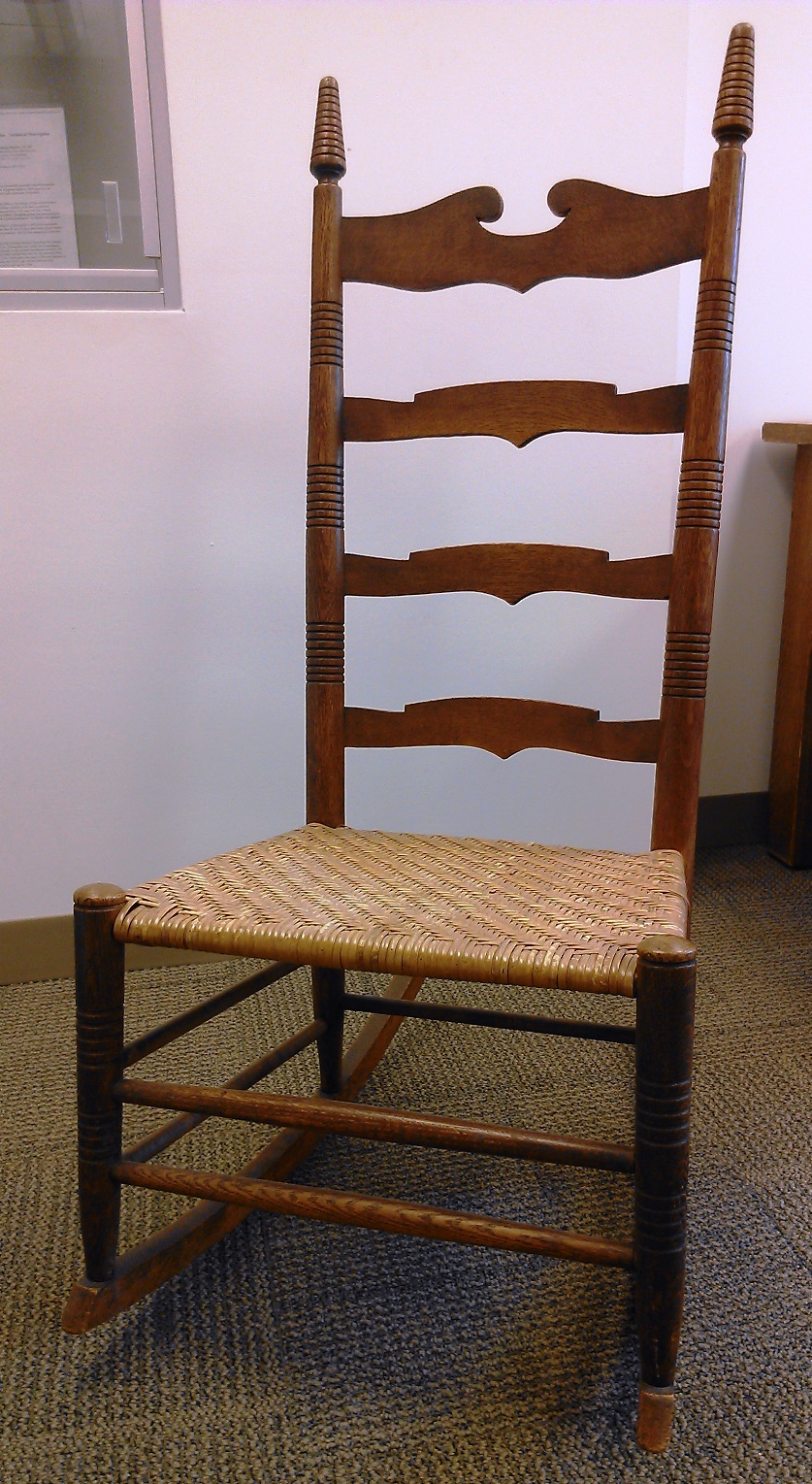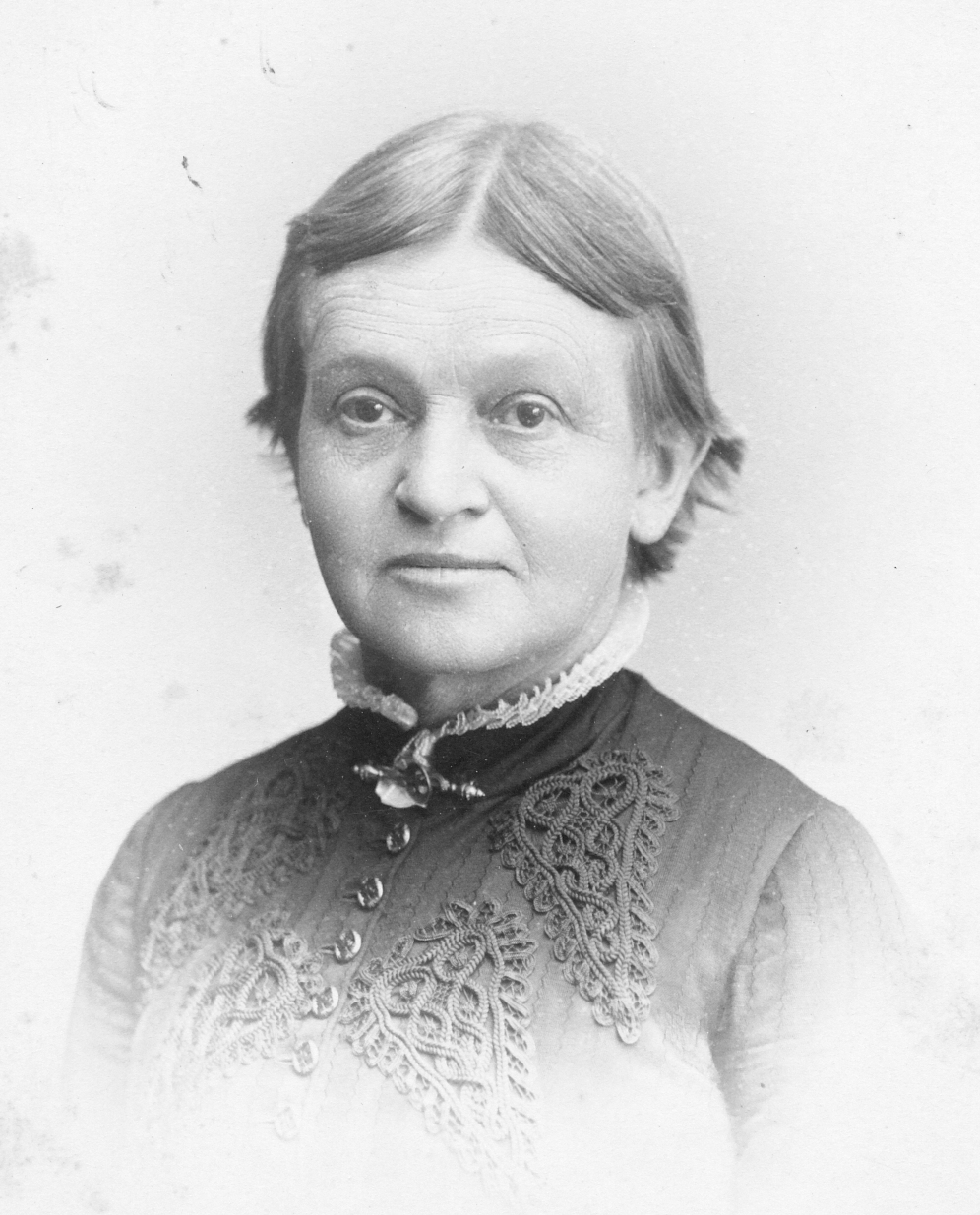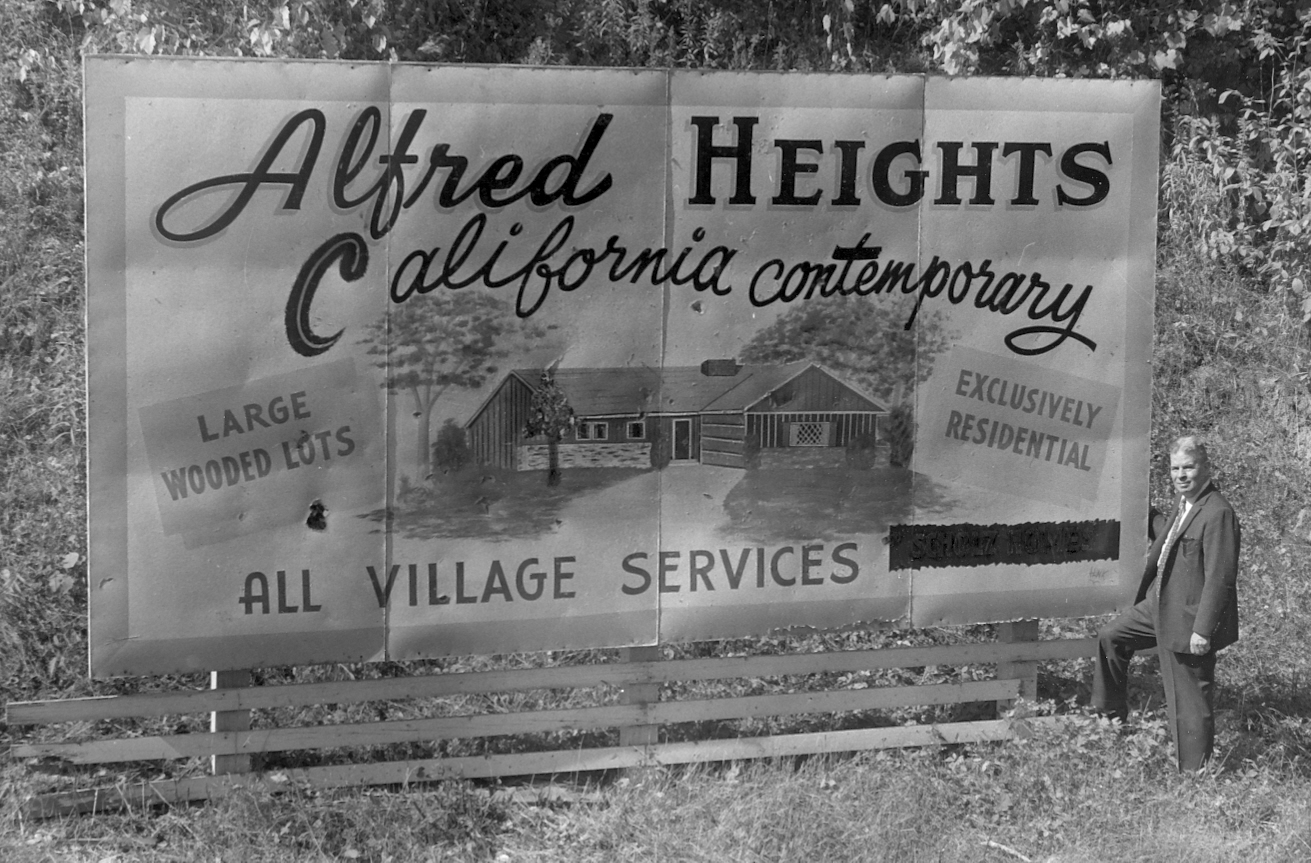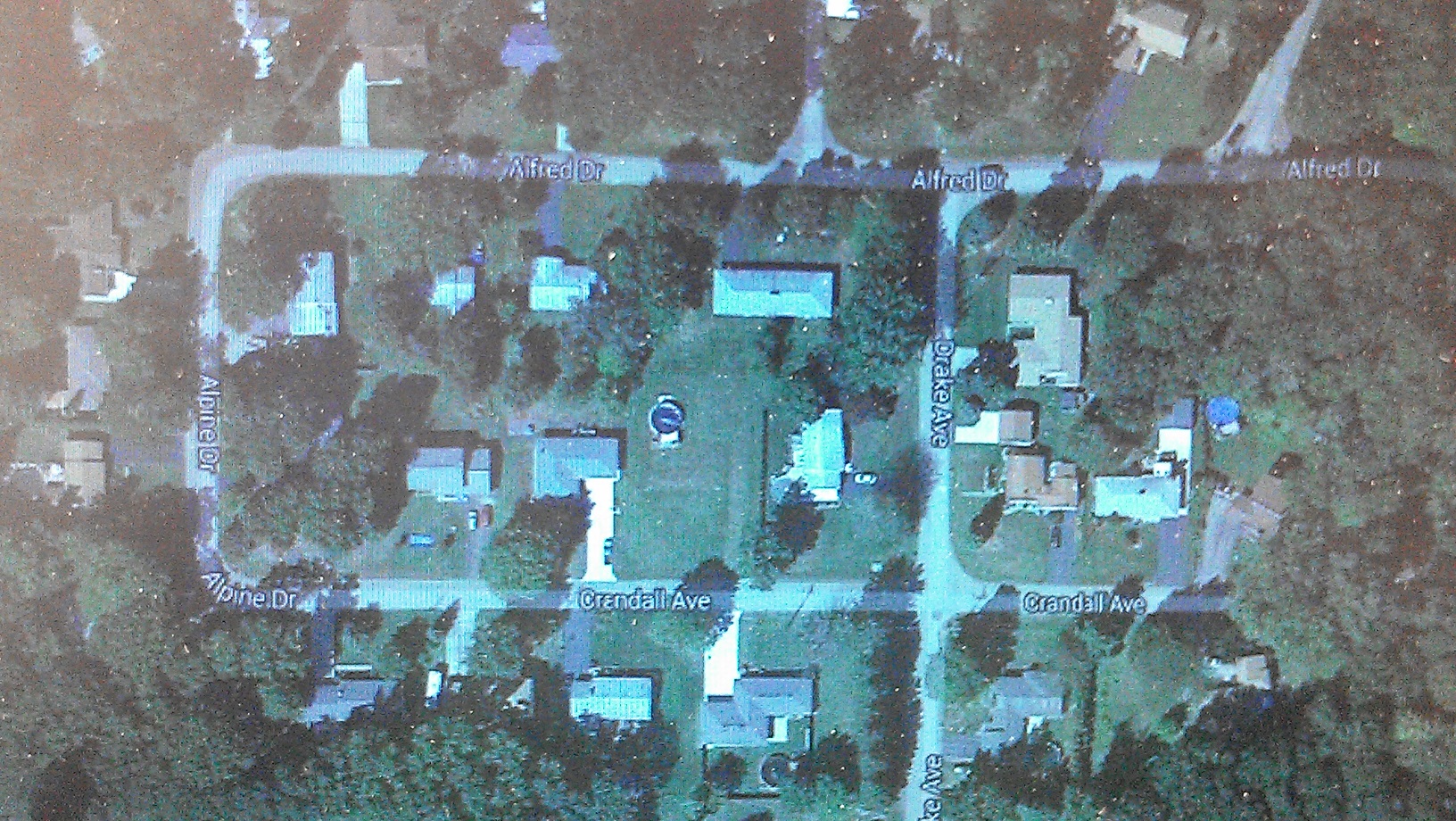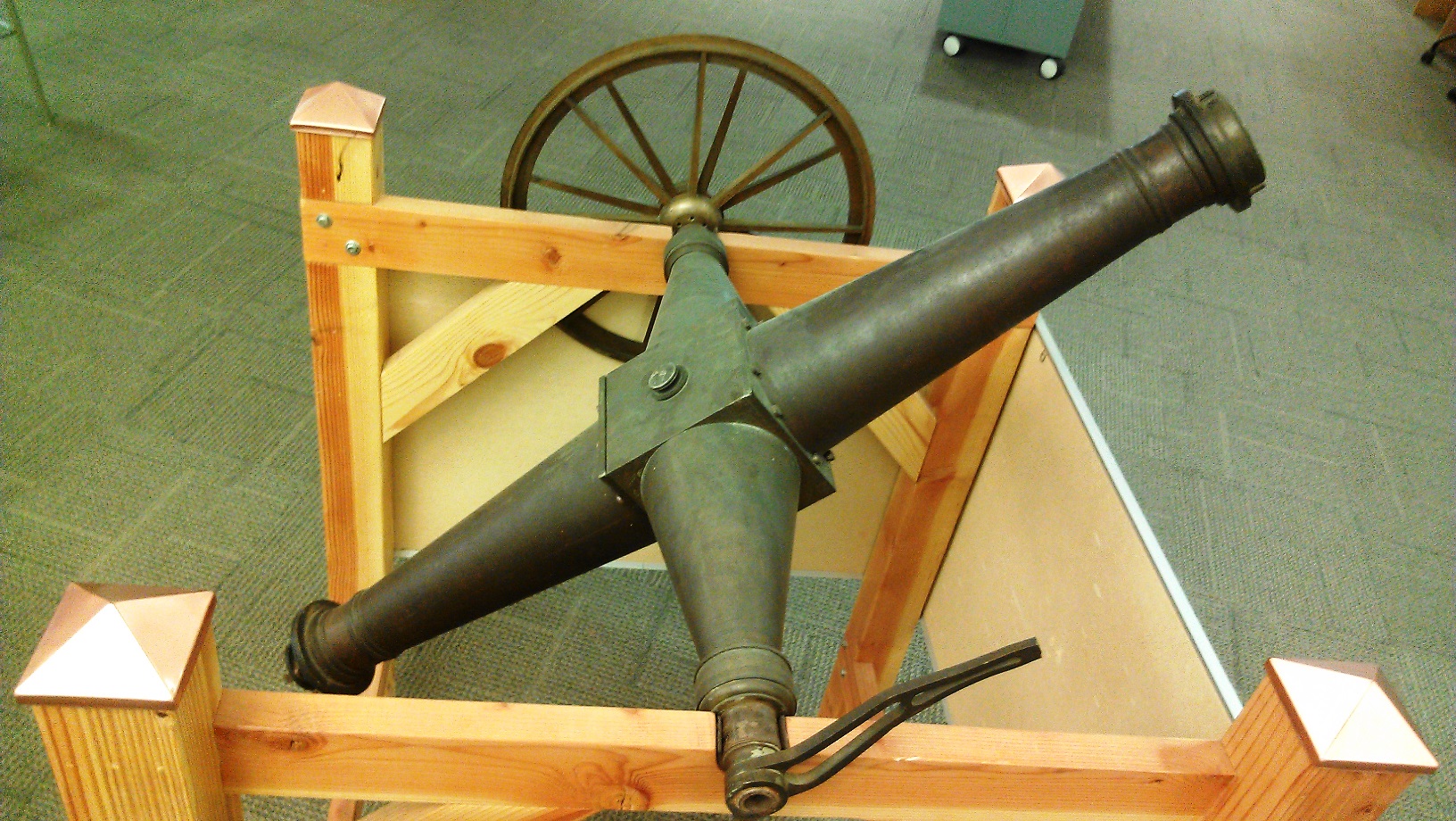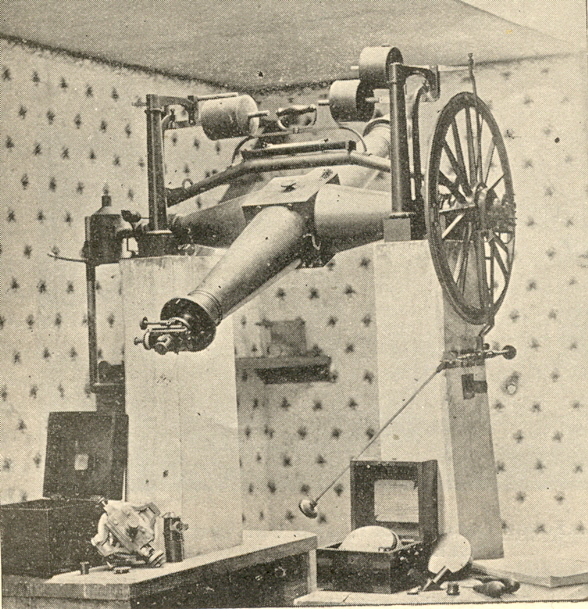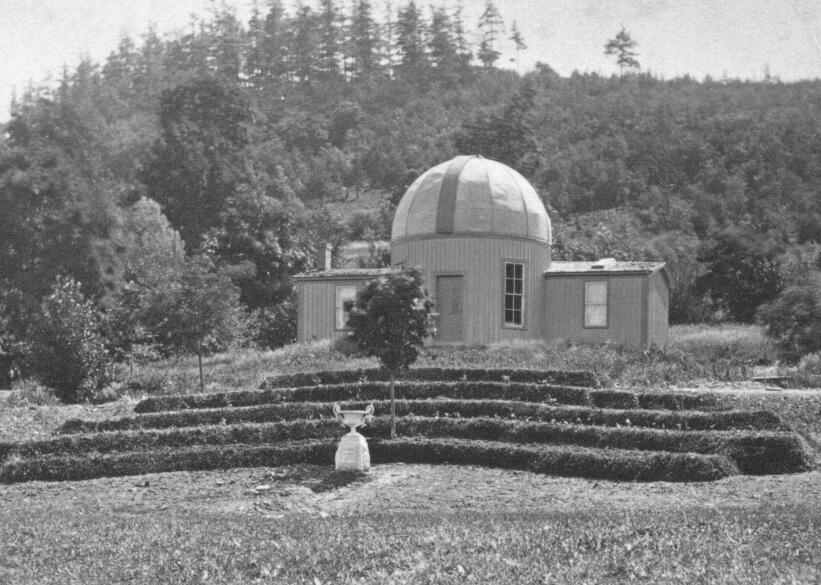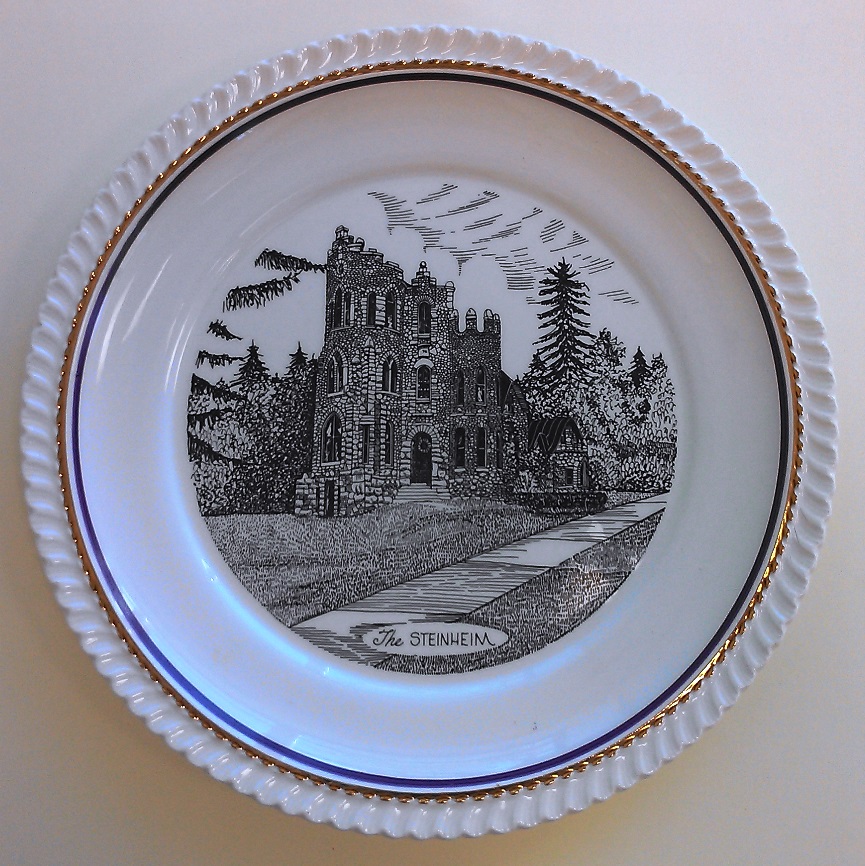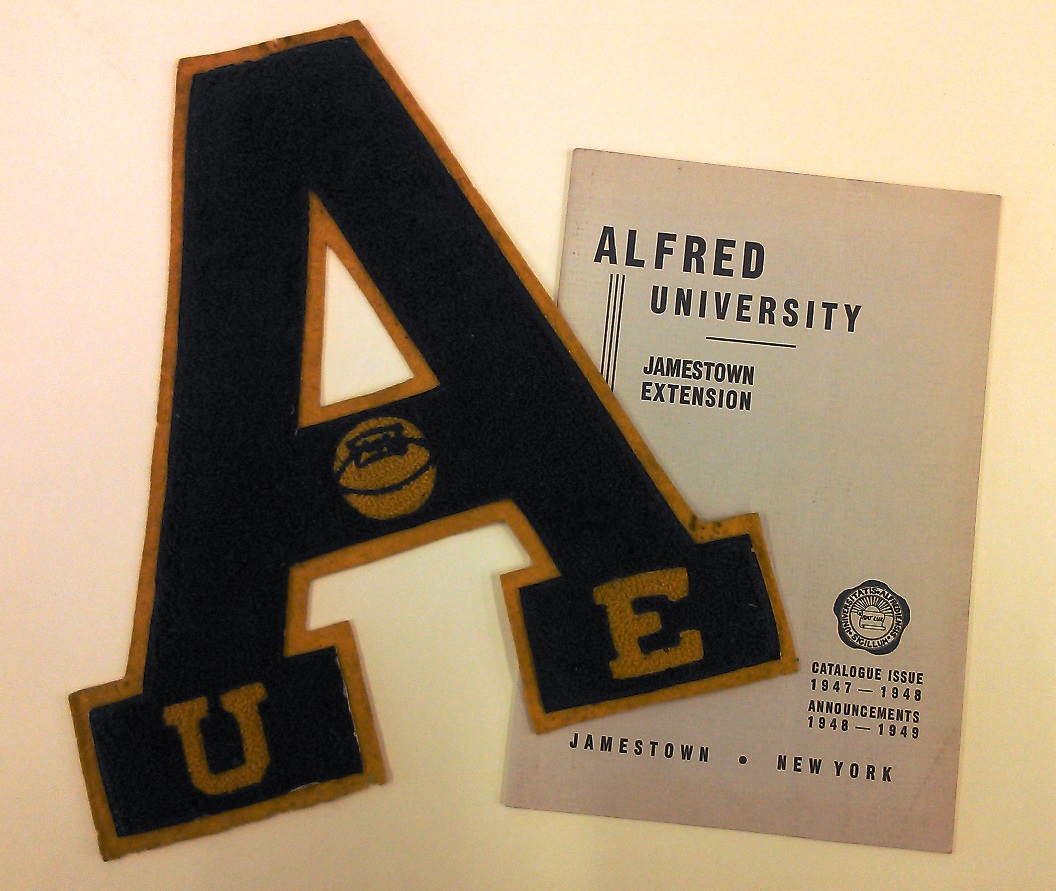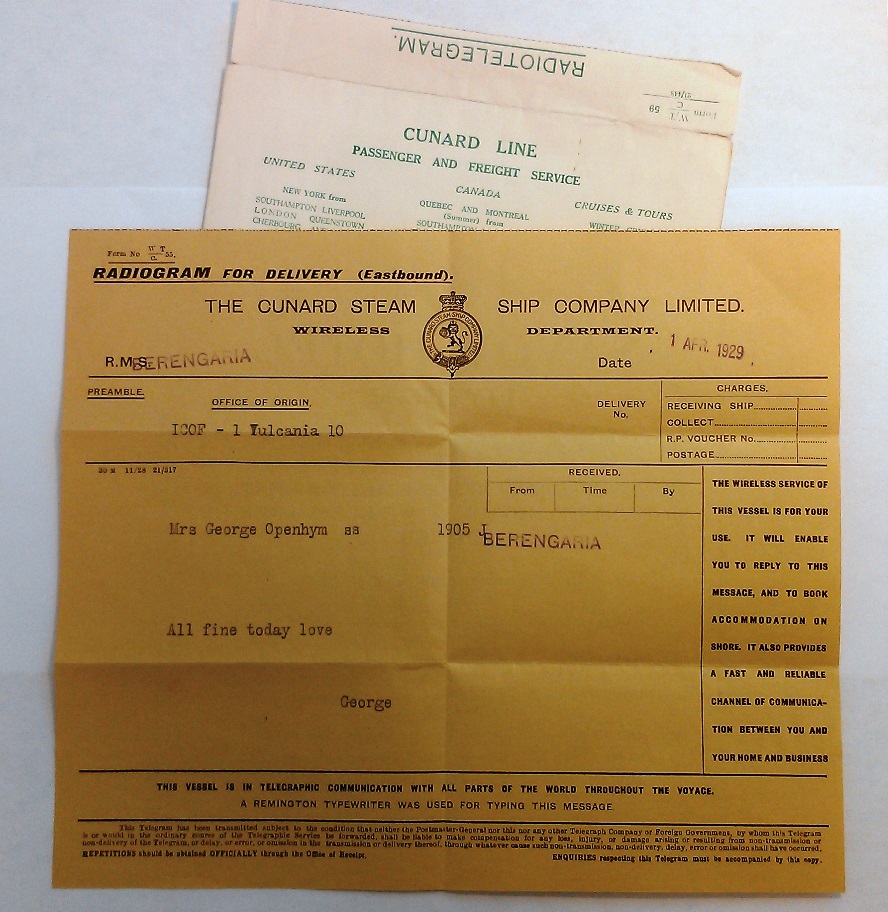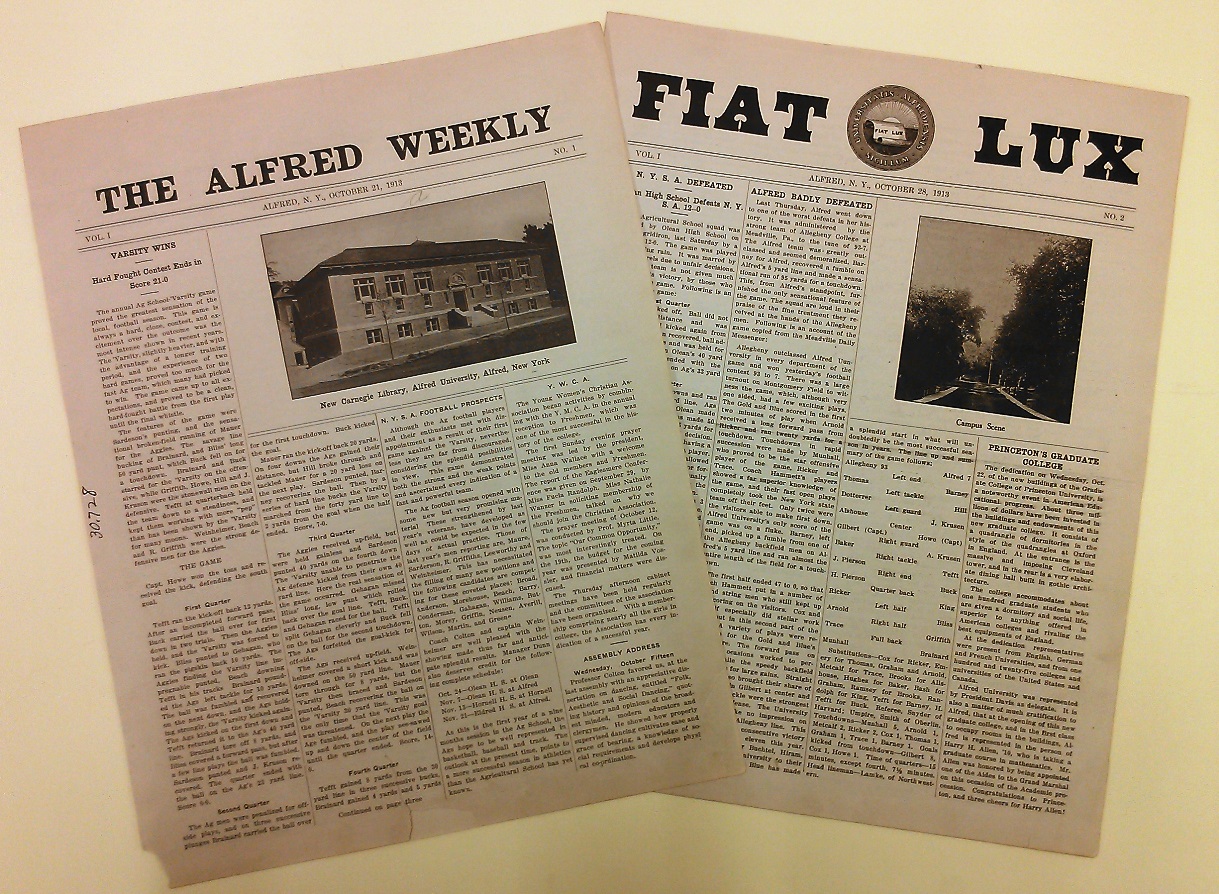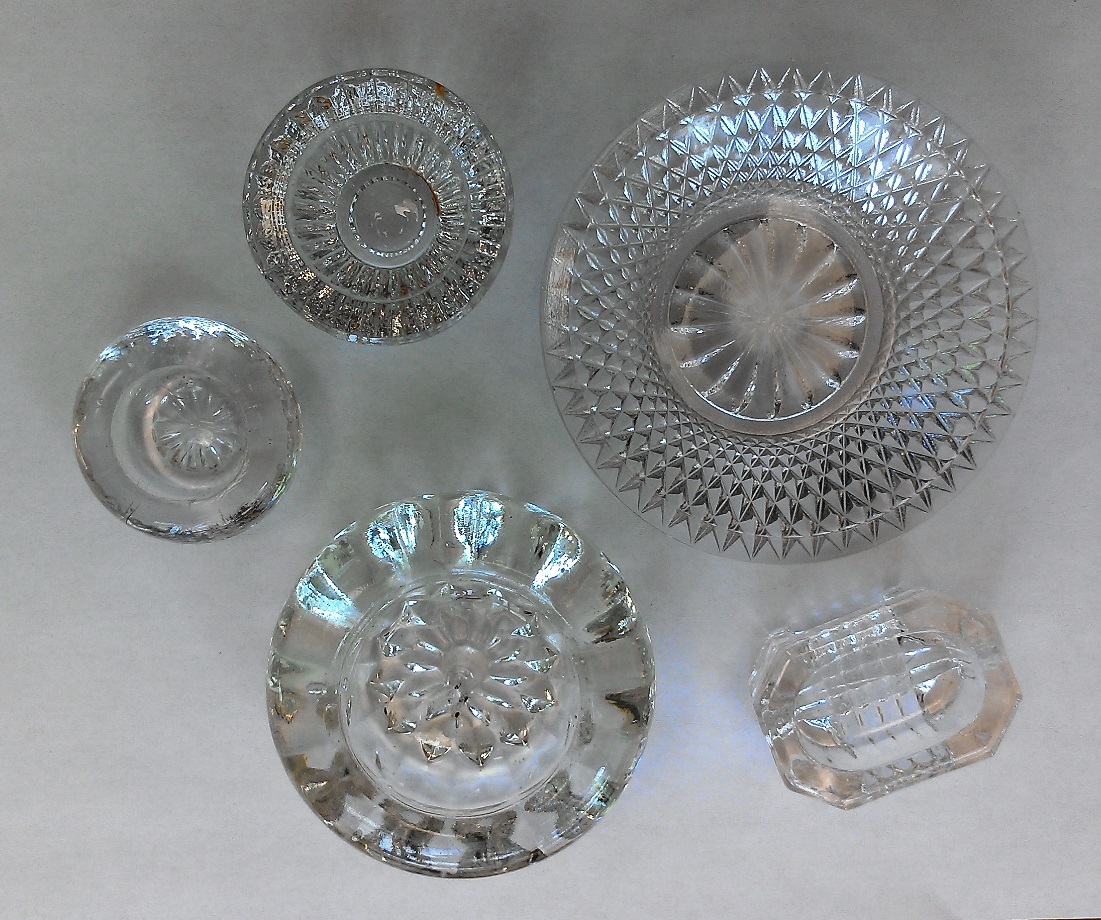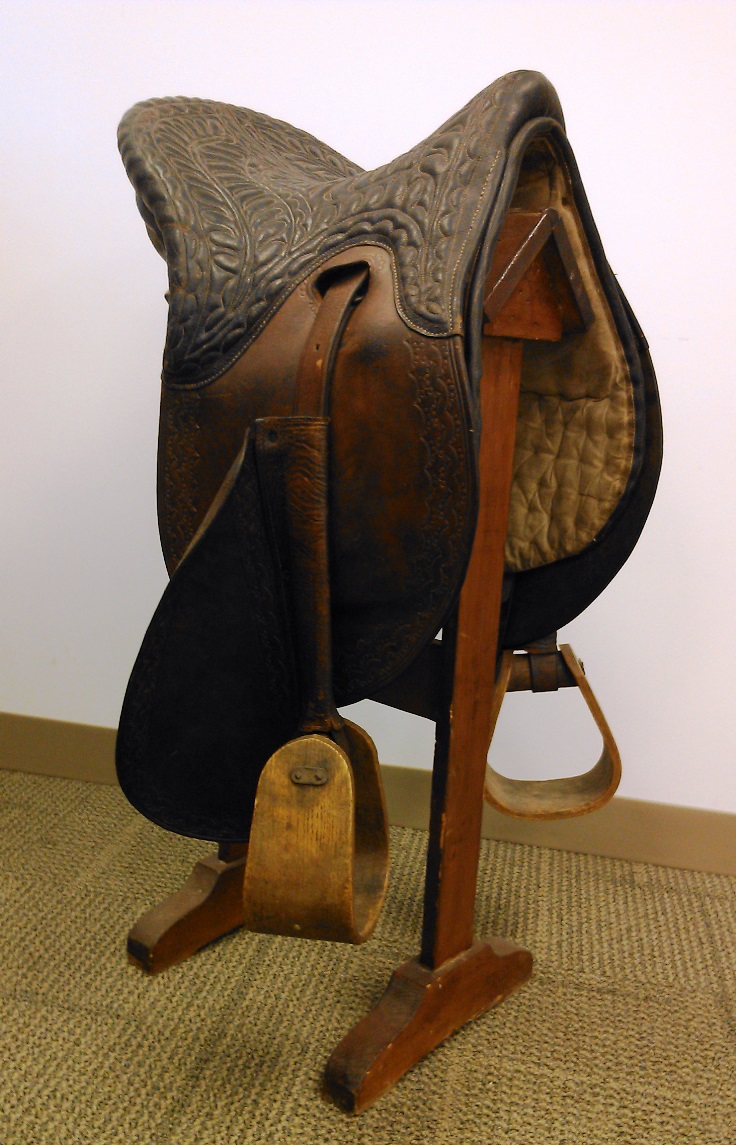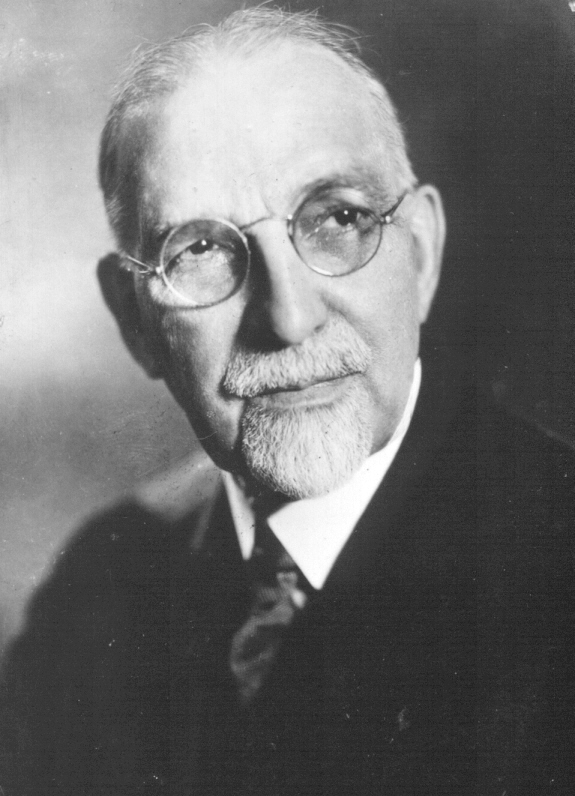How fun, we have our own alphabet! Actually, quite a bit of the University’s history can be discovered through the following poem, written by student Gertrude Burdick and published in The Alfred Monthly in October, 1898.
University Alphabet
A is for Alfred, the seat of a college
famed far and wide for the depth of its knowledge.
B is for Brick, where its students are boarded,
and all the comforts of home are afforded.
C is for Chapel, the first thing each morning,
where advice is bestowed, also much needed warning.
D is for Down-Town, a source of attraction
To any who suffer from mental inaction.
E’s for Eleven, the great and the glorious,
long haired and strong limbed, o’er all victorious.
F is for Faculty, grim, gray and awful
to him who’s committed an act that’s unlawful.
G is for Gothic and Greek, which is taught there,
to help fill the empty young heads that are brought there.
H is for Hard old translations that vex us,
And I is for Irregular verbs that perplex us.
J is for Junior – what shall we do with ‘em?
Give them Seniors’ old shoes when they’re through with ‘em.
K is Keep out of the Sophomores’ business,
And pay no heed to young hundred-two’s dizziness.
L is for Lover’s Lane, green and mysterious,
where we may flee from the problems that weary us.
M is for Midnight oil, burned by the capful –
not to mention the matches scratched up by the handful.
And N is for the poor Nervous system that’s shattered
in an effort to gather some thoughts widely scattered,
to produce an Oration that’s fit for Lyceum,
on all sorts of smart things and how we may be ‘em.
P is for Picnics, Pickles and Pleasures,
and poor lemonade poured in plentiful measures.
Q is for Questions obtuse, depth revealing,
discussed by the Oros in mad bursts of feeling.
R is for Regents, and there’s no denying,
of all fiery trials, this is the most trying.
S is for Seniors and Sheepskins and Sages,
and Schoolbooks shut up, with no more turned down pages.
T is Tuition, said sadly each quarter,
by the poor man who sends here his son or his daughter.
U is for Up on Pine Hill for a ramble,
And V is for the View that rewards the hard scramble.
W stands for the Winner of prizes,
who bears off the palm at the field exercises.
X is for Xenophon, painful to master,
where more than one student has come to disaster.
Y is the Yell, void of sense, blood congealing,
yet the best method known of expressing deep feeling.
And Z is for — well, for the twenty-sixth letter,
and the end of a ditty that might have been better.
